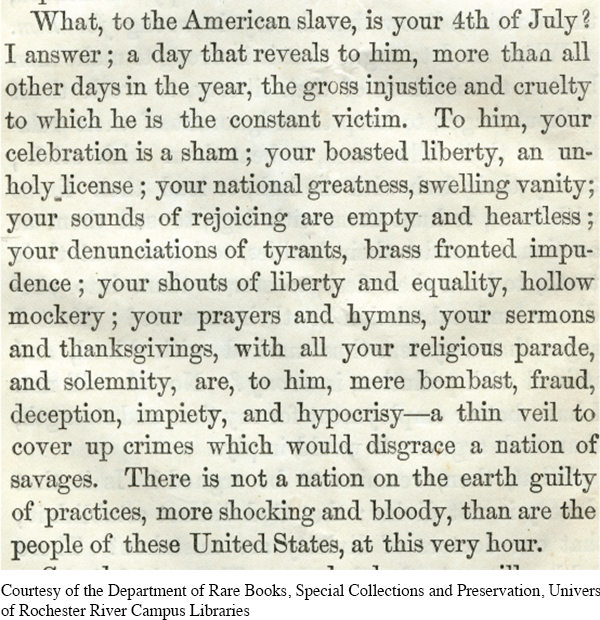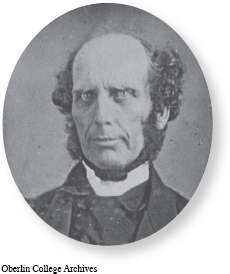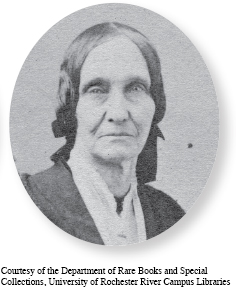Introduction to Chapter 11
11
Social and Cultural Ferment in the North
1820–1850
WINDOW TO THE PAST
What, to the American Slave, Is Your 4th of July?
Tensions over the expansion and brutalities of slavery intensified following the U.S. military victory over Mexico in 1848. Former slaves like Frederick Douglass became important advocates for abolition in this period. Douglass gave an impassioned and provocative speech on July 5, 1852, to a mixed-race audience in his hometown of Rochester, New York, in which he challenged white Americans to consider the meaning of their national holiday. To discover more about what this primary source can show us, see Document 11.4.

LEARNING OBJECTIVES
After reading this chapter you should be able to:
Explain the growth of and changes in northern cities, including issues of immigration, class stratification, and gender roles.
Analyze how industrialization transformed workers’ lives, was affected by the boom and bust economic cycle, and contributed to class and ethnic tensions.
Describe the range and appeal of religious movements that emerged in the 1830s and 1840s
Evaluate the emergence of reform movements and the strategies they embraced.
Explain the various forms of antislavery activism and their impact on other social and political changes.
AMERICAN HISTORIES

The great revival preacher Charles Grandison Finney was born in 1792 and raised in rural New York State. As a young man, Finney studied the law. But in 1821, like many others of his generation, he experienced a powerful religious conversion. No longer interested in a legal career, he turned to the ministry instead.
After being ordained in the Presbyterian Church, Finney joined “New School” ministers who rejected the more conservative traditions of the Presbyterian Church and embraced a vigorous evangelicalism. In the early 1830s the Reverend Finney traveled throughout New York State preaching about Christ’s place in a changing America. He held massive revivals in cities along the Erie Canal, most notably in Rochester, New York. He achieved his greatest success in places experiencing rapid economic development and an influx of migrants and immigrants, where the clash of cultures and classes fueled fears of moral decay.
Finney urged Christians to actively seek salvation. Once individuals reformed themselves, he said, they should work to abolish poverty, intemperance, prostitution, and slavery. He expected women to participate in revivals and good works but advised them to balance these efforts with their domestic responsibilities.

In many ways, Amy Kirby Post fit Finney’s ideal. Born into a farm family in Jericho, New York, she found solace in spirituality and social reform. Like many other people in this period, Amy experienced the loss of loved ones. In 1825, at age twenty-three, Amy’s fiancé died, and two years later she lost the sister to whom she was closest. The next year, Amy married a widower, Isaac Post. She mothered his two young children and bore five children of her own, two of whom died young. Yet Amy Post did not embrace evangelical revivals, but focused instead on the quiet piety preferred by her Quaker community.
Still, the personal upheavals Amy experienced in her twenties occurred amid heated controversies within the Society of Friends (Quakers). Elias Hicks claimed that the Society had abandoned its spiritual roots and become too much like a traditional church. His followers, called Hicksites, insisted that Quakers should reduce their dependence on disciplinary rules, elders, and preachers and rely instead on the “Inner Light”—the spirit of God dwelling within each individual. When the Society of Friends divided into Hicksite and Orthodox branches in 1827, Amy Kirby and Isaac Post joined the Hicksites.
In 1836 Amy Post moved with her husband and children to Rochester, New York. In a city marked by the spirit of Finney’s revivals, Quakers emphasized quiet contemplation rather than emotional conversions, but the Society of Friends allowed members, including women, to preach when moved by the spirit. Quaker women also held separate meetings to discipline female congregants, evaluate marriage proposals, and write testimonies on important religious and social issues.
Amy Post’s spiritual journey was increasingly shaped by the rising tide of abolition. Committed to ending slavery, she joined hundreds of local evangelical women in signing an 1837 antislavery petition. Five years later, she helped found the Western New York Anti-Slavery Society, which included Quakers and evangelicals, women and men, and blacks and whites. Post’s growing commitment to abolition caused tensions in the Hicksite meeting since some members opposed working in “worldly” organizations alongside non-Quakers. In 1848 Post and other radical Friends formed a new, more activist-oriented Quaker meeting and embraced women’s rights as well as abolition.
The American histories of Charles Finney and Amy Post were shaped by the dynamic religious, social, and economic developments in the early-nineteenth-century United States. Finney changed the face of American religion, aided by masses of evangelical Protestants. The rise of cities and the expansion of industry in the northern United States made problems like poverty, unemployment, alcohol abuse, crime, and prostitution more visible, drawing people to Finney’s message. Other Americans brought their own religious traditions to bear on the problems of the day. Some, like Post, were so outraged by the moral stain of slavery that they burst traditional religious bonds and reconsidered what it meant to do God’s work. For both Finney and Post, Rochester—the fastest-growing city in the nation between 1825 and 1835—exemplified the problems and the possibilities created by urban expansion and social change.
Exploring American HistoriesPrinted Page 347
Exploring American Histories Value EditionPrinted Page 257
Chapter Timeline